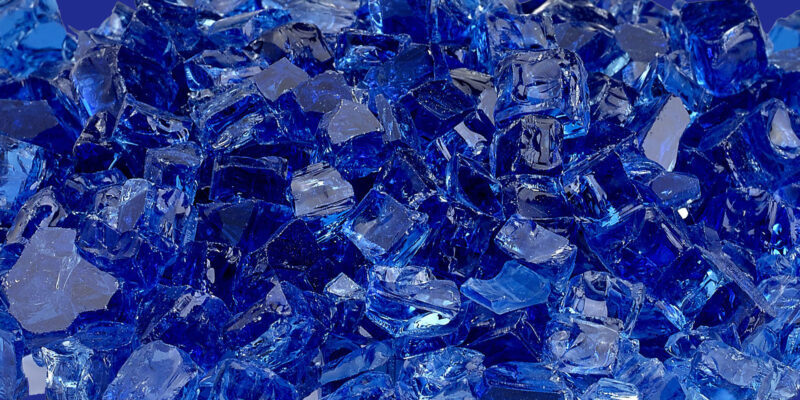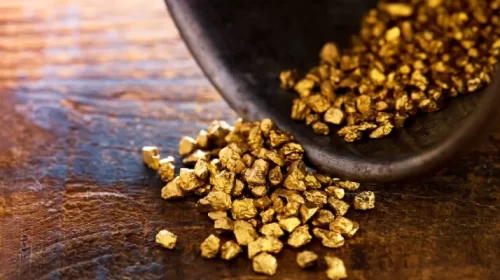Here is the List of 50 Minerals essential to the American economy and its national security, the DRC hosts several of these products
The United States Geological Survey has released a new list of 50 mineral commodities critical to the US economy and national security after extensive evaluation by multiple agencies. The 2022 list of critical minerals was determined using the latest scientific methods to assess the criticality of minerals. The new list contains 15 more products than the first National Critical Minerals List created in 2018. platinum as individual entries rather than including them as “mineral groups.” Additionally, the 2022 list of critical minerals adds nickel and zinc to the list while removing helium, potash, rhenium, and strontium.
“Critical minerals play an important role in our national security, economy, renewable energy development and infrastructure,” said Tanya Trujillo, Assistant Secretary of the Interior for Water and Science. “USGS’s data collection and analysis scans the horizon of emerging issues in crucial supply chains and, every three years, identifies the country’s current vulnerabilities to potential disruptions.”
The new list was created based on the guidelines of the Energy Act 2020, which states that at least every three years the Home Office must review and update the list of critical minerals, update the methodology used to identify potential critical minerals, take interagency feedback and public comments through the Federal Register, and ultimately finalize the list of critical minerals.
The Energy Act of 2020 defines a “critical mineral” as a noncombustible mineral or mineral material that is essential to the economic or national security of the United States and whose supply chain is vulnerable to disruption. Critical minerals are also characterized as performing an essential function in the manufacture of a product, the absence of which would have significant consequences for the economy or national security.
The 2022 List of Critical Minerals, while “final”, is not intended as a permanent designation of mineral criticality, but will be a dynamic list periodically updated to represent current data on supply, demand, concentration of production and current political priorities.
“Mineral criticality is not static, but changes over time,” said Steven M. Fortier, director of the USGS National Mineral Information Center. “The 2022 Critical Minerals List was created using the most recent available data on non-combustible mineral commodities. However, we are continuously analyzing mineral markets and developing new methods to determine the diverse and evolving risks of the critical mineral supply chain.”
The Energy Act of 2020 directed the USGS to update the list of critical minerals, and the list is timely to provide guidance on the use of bipartisan Infrastructure Act funds, both for the USGS and other agencies.
The 2022 list of critical minerals includes the following:
- Aluminum , used in almost every sector of the economy
- Antimony , used in lead acid batteries and flame retardants
- Arsenic , used in semiconductors
- Barite , used in the production of hydrocarbons.
- Beryllium , used as an alloying agent in the aerospace and defense industries
- Bismuth , used in medical and atomic research
- Cerium , used in catalytic converters, ceramics, glass, metallurgy, and polishing compounds
- Cesium , used in research and development
- Chromium , used primarily in stainless steel and other alloys
- Cobalt , used in rechargeable batteries and superalloys
- Dysprosium , used in permanent magnets, data storage devices, and lasers
- Erbium , used in optical fibers, optical amplifiers, lasers, and glass dyes
- Europium , used in phosphors and nuclear control rods
- Fluorspar , used in the manufacture of aluminum, cement, steel, gasoline, and fluorinated chemicals
- Gadolinium , used in medical imaging, permanent magnets, and steelmaking
- Gallium , used for integrated circuits and optical devices like LEDs
- Germanium , used for fiber optics and night vision applications
- Graphite , used for lubricants, batteries and fuel cells
- Hafnium , used for nuclear control rods, alloys and high temperature ceramics
- Holmium , used in permanent magnets, nuclear control rods, and lasers
- Indium , used in liquid crystal displays
- Iridium , used as a coating of anodes for electrochemical processes and as a chemical catalyst
- Lanthanum , used to produce catalysts, ceramics, glass, polishing compounds, metallurgy, and batteries
- Lithium , used for rechargeable batteries
- Lutetium , used in scintillators for medical imaging, electronics, and some cancer therapies
- Magnesium , used as an alloy and to reduce metals
- Manganese , used in steelmaking and batteries
- Neodymium , used in permanent magnets, rubber catalysts, and medical and industrial lasers
- Nickel , used to make stainless steel, superalloys, and rechargeable batteries
- Niobium , used primarily in steel and superalloys
- Palladium , used in catalytic converters and as a catalyzing agent
- Platinum , used in catalytic converters
- Praseodymium , used in permanent magnets, batteries, aerospace alloys, ceramics, and dyes
- Rhodium , used in catalytic converters, electrical components, and as a catalyst
- Rubidium , used for electronics research and development
- Ruthenium , used as catalysts, as well as electrical contacts and chip resistors in computers
- Samarium , used in permanent magnets, as an absorber in nuclear reactors, and in cancer treatments
- Scandium , used for alloys, ceramics and fuel cells
- Tantalum , used in electronic components, primarily capacitors and superalloys
- Tellurium , used in solar cells, thermoelectric devices, and as an alloy additive
- Terbium , used in permanent magnets, fiber optics, lasers, and semiconductor devices
- Thulium , used in various metal alloys and in lasers
- Tin , used as protective coatings and alloys for steel
- Titanium , used as a white pigment or metal alloys
- Tungsten , primarily used to make wear-resistant metals
- Vanadium , mainly used as an alloying agent for iron and steel
- Ytterbium , used for catalysts, scintillometers, lasers and metallurgy
- Yttrium , used for ceramics, catalysts, lasers, metallurgy, and phosphors
- Zinc , mainly used in metallurgy to produce galvanized steel
- Zirconium , used in high temperature ceramics and corrosion resistant alloys.
The USGS provides scientific data and unbiased information on mineral resource potential, production, consumption, disposal, and how minerals interact with the environment. The USGS National Minerals Information Center provides the nation with data on the domestic and global supply, demand, and trade of minerals and materials. This information is essential for understanding mineral dependencies in economic sectors, predicting potential disruptions in the supply of mineral raw materials, and assessing the impacts of these disruptions.
44 total views , 1 views today





